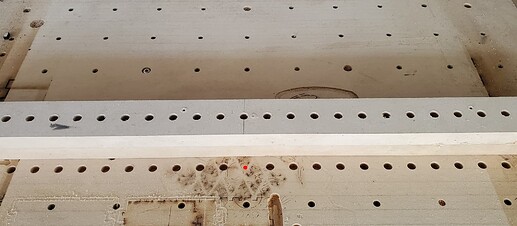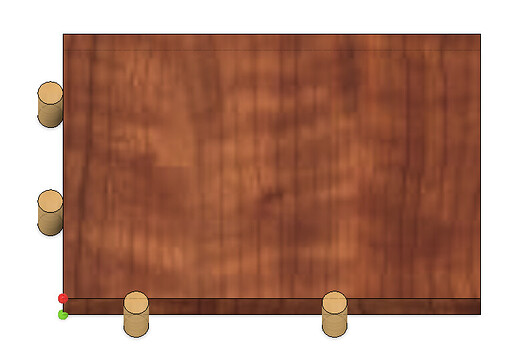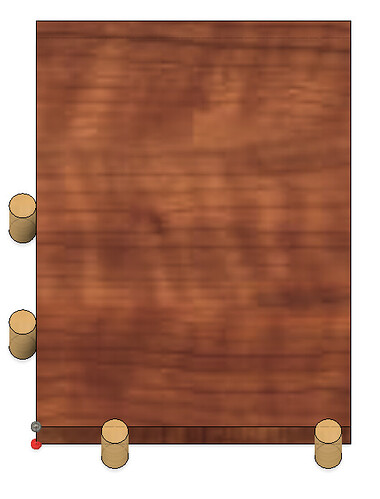I’ve always used the pin method that Jeff describes. The stock can be flipped on either the vertical or horizontal axis. I’ve always flipped it horizontally. I use the center-top of my stock as my origin point (black point) because this point will remain at the same position for both the top and the bottom jobs. The holes for the pins are placed on the horizontal axis. The further apart the pins, the greater the potential accuracy, and the stock is flipped across the axis line. When milling the top side, the holes are cut through the stock and into the spoil board. I have 3/4" MDF for my spoil board and would go around 1/2" into the board for the pins.
I’ve done relatively little double-sided milling, but I did have an occasion where I had to do a number of pieces in foam for a cosplay prop. Rather than turn my spoil board into Swiss cheese, I created a jig with row of holes and a matching row in my spoil board. The center point (marked in red) in the row in my spoil board is a known offset from my home position. I would use the jig and a hand drill to place holes in the stock. Then I would use pins and the row of pre-drilled holes to place the stock on the spoil board. This worked well, though it has the potential to be less accurate. But, the one strong positive of this method is that it reduces the amount of vertical working space required by 1/2".
Another method that has been mentioned on the forum is to flip and rotate the stock. Rules (or just some aligned pins) are used to position stock so that it is square and a corner is known.
I put colored spheres on the origin corner to make things easier to see. After flipping and rotating:
The corner remains the same, and, as long as the stock has square corners, the stock remains aligned. This is easy to author in Fusion 360, but I’m not sure how difficult it might be to do a rotated setup for the back side in other CAM tools.
For all my double-sided milling, I leave the stepper engaged when flipping the stock. Sometimes I also recorded the offset from the machine home to the stock home in case I needed to power down.



